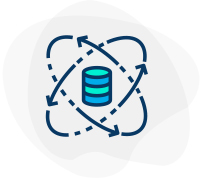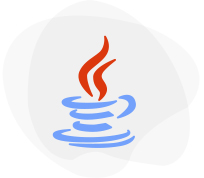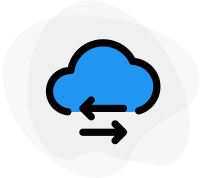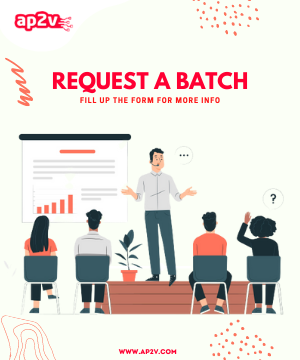Top 21 Python Flask Interview Questions
Top Python flask interview questions
- 4.9 Rating
- 21 Question(s)
- 60 Mins of Read
- None Reader(s)
It is a framework in Python used for web development. This is based on the Jinja2 templates engine and Werkzeug comprehensive WSGI web application library.
Python flask is part of the Pallets projects developed by Armin Ronacher. It consists of the Python web development libraries such as Flask, Click, Werkzeug, MarkupSafe, Jinja, and ItsDangerous.
5000 is the default port and 127.0.0.1 is the default host port in Flask.
The Flask-Sijax extension that uses a Python/JQuery is used to create Ajax application. Flask-Sijax is installed used pip and it is available on PyPI.
Sijax stands for Simple Ajax. Sijax enables the use of @flash_sijax decorator for making Ajax aware of the views in a Flash Application. It is necessary to configure and initialize Sijax to enable its use.
Installing Flask gives access to a command-line application called Flask. There are various commands that we can use. –help command is used on the command line to see all the options. A few default commands used in Flask include routes, run, and shell.
Flask is considered as a micro framework as the features are simple yet extensible. It does not require any particular tools or libraries to function. It allows to use extensions to which additional features are added to develop applications.
The following are the core features of Python Flask:
• Support for unit testing
• Includes built-in server and debugging tools
• Securing cookies during client-side sessions
• Allows dispatch of RESTful request
• Compliance with the Web Server Gateway Interface (WSGI)
• Compatible with Google App Engine
• Supports Unicode
• Additional features can be added for application development through extensions
Many features of Flask Python are similar to Python. Few are mentioned below:
• Modular and lightweight. These two features of Flask allows to transform it into web applications or frameworks adding few extensions.
• The Flask framework is shaped nicely and made coherent.
• The ORM-agnostic feature of Flask allows users to easily plug in ORM SqlAlchemy.
• Flask documentation is comprehensive and well-structured that includes lots of examples. A few sample applications are also available for users to get a feel of Flask.
• The WSGI 1.0 support allows easy deployment of Flask in production.
• The various functionalities in Flask makes it easy to handle HTTP requests.
• The highly flexible configuration of Flask allows users to with plenty of solutions for any product.
• The various databases supported by Flask include Microsoft SQL Server, MySQL, Oracle, SQLite, Sybase, PostgreSQL and more. DBAdapters are used by Flask to support various databases.
• Flask applications use SQL and Object Relational Mapping (ORM) to manipulate databases. ORM makes use of object-oriented language to write queries and translates it to SQL later retrieve it as an object.
• In order to support other databases Flask uses custom DBAdapters. To support MongoDB databases via Flask-MongoEngine, Flask uses a MongoDBAdapter.
Flask | Django |
Flask is built for rapid web development. | Django is built for simple and easy projects. |
It is a lightweight framework that does not need any external libraries and works on minimalist features. | It is a high-level Python Framework with a steep learning curve. Experienced developers understand the architecture and conventions of Django better and enjoy working on it. |
Flask has API support | Django does not support any API |
Dynamic HTML pages are not supported by Flask | Django support dynamic HTML pages |
Flask works on the WSGI framework | Django works on the Full Stack Web framework |
A diversified style of working is followed by Flask | A monolithic working style is supported by Django |
• Flask-WTF is used for simple integration with WTForms. Its features include:
• Integration with web forms
• The CSRF token makes it a secure form
• It provides a global CSRF protection
• Provides international integration
• Supports recaptcha
• It consists of File upload that is supported by Flask uploads
GET: It sends unencrypted data to the server
HEAD: It has same functionality of the GET method but has no response body
POST: This method makes the POST server not to cache the HTML form data that it sends
PUT: The current data representations of the target resources are replaced with the uploaded content by using this method.
DELETE: It removes the current representations of the target resource that is suggested by the URL.
There are two ways to create a request context in Flask Python:
• It is automatically created when the application receives a request from the system
• By calling it manually through app.test_request_context
The following steps are implemented to structure a large Flask application:
• The functions can be connected to and then transferred to different files, as long as users are assured they will be imported as soon as the applications are opened.
• Assign the views to various categories such as authentication, backend, and profile using blueprints.
• Register functions on a central URL map using the Werkzeug hidden URL map.
For creating a database in Flask Python users need to install sqlite3 command. Flask Python supports all kinds of databases which require schema and further require connecting of schema.sql file to a sqlite3 command.
Flask is used to create web applications. These include, SaaS applications, static websites, Microservices, RESTful API based applications, single page applications, and small to medium size websites.
Run the following command to install the Flask-Mail flask extension and for sending mails:
pip install Flask-Mail
Next, we'll need to configure the Flask Config API to set up MAIL_SERVER, MAIL_PORT, MAIL_USERNAME, MAIL_PASSWORD, and so on. Before sending the mail it is necessary to import the Message Class, instantiate it, and create a message object before using the mail.send() function.
request.remote_addr command is used to get the visitor IP address.
Sessions contain the information from one request to another. A signed cookie in Flask is used by the user to verify the session content and modify. By using the secret key Flash.secret_key the contents of a session can be modified.
Thread-local objects are used by Flask to avoid transmission of objects from function to function within a request to stay thread-safe.
Flask is a small form of Python framework that acts as a MVC framework, hence it is a MVC model.

{{ crs.category_name.all|join:" • " }}
Django Course Training Online
{{ crs.category_name.all|join:" • " }}
Data Science with Python Training Course …
{{ crs.category_name.all|join:" • " }}
PERL Training Course Online
{{ crs.category_name.all|join:" • " }}
Java Course Training Online
{{ crs.category_name.all|join:" • " }}
Python Core Training Course Online
{{ crs.category_name.all|join:" • " }}
Hadoop Training OnlineRecorded Videos
- Enhance students learning Experience.
- Relief the pressure of Note-Taking.
- Lifetime Access.
- Learning Flexibility.
- Easy to retakes of each sessions.
- Pocket friendly course.
Live Interactive Classes
- Lectures bring together diversed group of students to learn in different ways.
- Live interactive Instructor-led training.
- 24 x 7 hours learning assistance.
- Have a team of well-qualified expert trainers.
- Lifetime access of class recordings.
- Affordable fees.
Sign in to your account
Sign in to your account
Welcome back! Login with your data that you entered during registration.
Email and Password are case sensitive...
- Forget Password
Create Account
Create Account
Use your email for registration.
Please enter name
Please enter email
Please enter password
Must be grater 6 characters as long.
Can contain any letters a to z or A to Z.
Can contain some special characters eg(@,#,$,%,&,*,%).
Can contain any numbers from 0 to 9.
Flask memory management is done through Flask Python memory manager. The Flask Python is a collection of private heap spaces that hold objects and data structures together. It cannot be accessed by programmers. But a few tools can be accessed by users from the core API. The interpreter manages the task. The in-built garbage collector recycles all the unused memory to make it available for the heap space.

{{ crs.category_name.all|join:" • " }}
Django Course Training Online
{{ crs.category_name.all|join:" • " }}
Data Science with Python Training Course …
{{ crs.category_name.all|join:" • " }}
PERL Training Course Online
{{ crs.category_name.all|join:" • " }}
Java Course Training Online
{{ crs.category_name.all|join:" • " }}
Python Core Training Course Online
{{ crs.category_name.all|join:" • " }}
Hadoop Training OnlineRecorded Videos
- Enhance students learning Experience.
- Relief the pressure of Note-Taking.
- Lifetime Access.
- Learning Flexibility.
- Easy to retakes of each sessions.
- Pocket friendly course.
Live Interactive Classes
- Lectures bring together diversed group of students to learn in different ways.
- Live interactive Instructor-led training.
- 24 x 7 hours learning assistance.
- Have a team of well-qualified expert trainers.
- Lifetime access of class recordings.
- Affordable fees.
Sign in to your account
Sign in to your account
Welcome back! Login with your data that you entered during registration.
Email and Password are case sensitive...
- Forget Password
Create Account
Create Account
Use your email for registration.
Please enter name
Please enter email
Please enter password
Must be grater 6 characters as long.
Can contain any letters a to z or A to Z.
Can contain some special characters eg(@,#,$,%,&,*,%).
Can contain any numbers from 0 to 9.





